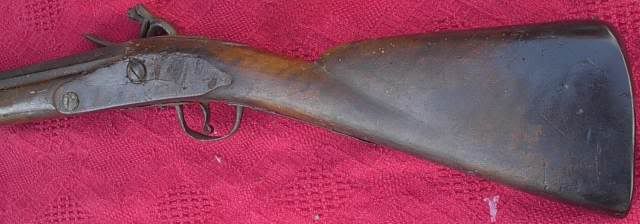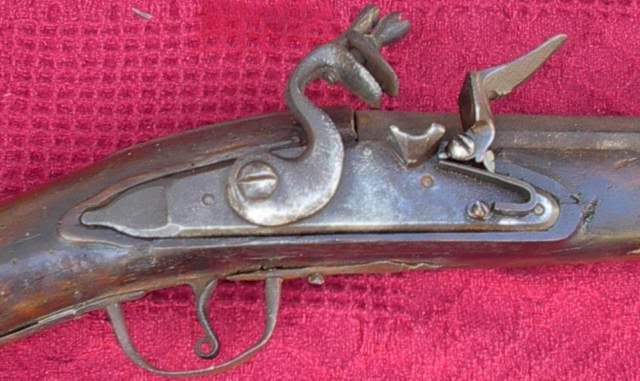Squire Robin said:
I thought the next step was the "English lock" with the same sideways sear and cock catcher, but having the pan cover as part of the frizzen. Then the flat faced doglock, then the true flinlock with half cock, round face and banana.
OTOH, as usual, I could be completely wrong :redface:
Actually you are wrong.The snaphaunce and wheelock were the precursers to the true flintlock which originated in France Ca. the 1630's and the snaphaunce was still used in England until about 1650 when, in response to the true flintlock,the English lock came into being. It retained the horizontal sear and generally used the dog catch as a safety device.Most snaphaunces were converted to flint and also utilized the dog catch.There was no dog lock as a distinct ignition system and it was almost never used on the continent.The so called dog locks found in America and England are simply converted snaphaunces with a dog catch.The problem is that any lock with a dog catch has come to be referred to as a dog lock. I saw a Ca. 1730 English fowler a few years ago in a major New England museum with a three screw flintlock and a dog catch.The English locks were flat faced with a dog catch and often a horizontal sear until 1684 when the Samuel Oakes pattern with it's round faced lock became popular.
The gun here is,I believe, a swan or goose gun made in the low countries or perhaps in the Sedan region of Northeast France.The lock configuration is one which is found as early as 1640 and continued until the mid 17th century when locks became round faced with parallel top and bottom and some had a slight banana outline.They also had a small teat in the center of the tail.Dutch locks were very similar and Hamilton {Fig. 6}shows a flat faced lock very similar on a restored Dutch gun.These locks seem to have occurred as both flat and round faced when found on guns from France and the low Countries.The present gun has a lock which would have been found on guns from the 1740's to the 60's. Lenk shows a number of these locks as being from France,the Sedan,Western Europe and the Low Countries. The outline is very much like the old snaphaunces and as stated above several are ahown by Lenk.There are also several guns and pistols with similar locks illustrated in the H.L.Visser collection of Dutch and related firearms.A lock almost identical to the one on the gun in question is also shown in the "Proceedings of the 1984 Trade Gun Conference" Part I,P.36,
Fig.27, Type V-A. That lock was found in a Senecaa site of the 17th century.The 73" barrel is not an extreme rarity in Dutch and Low country guns. Visser shows at least one with a barrel about a foot longer.
The plainess of the gun appears to indicate it's utilitarian purpose but I am frankly surprised at it's having a full octagon tapered barrel.The upward pointing tang screw is a feature commonly found on guns of this period and the wide 2 1/2" butt bespeaks it's earliness.This gun could have been restocked in this country but I suspect it will take testing to be sure.
Torsten Lenk,"The Flintlock
J.P.Puype, "The Visser Collection, Arms of the Netherlands"
Jan Piet Puype,"Proceedings of the 1984 Trade Gun Conference"Part I, Dutch and Other Flintlocks from Seventeenth Iroquois sites
T.M.Hamilton,"Frontier Colonial Guns"
S.James Gooding,"trade guns of theHudson's bay Company 1670-1970"
Tom Patton













